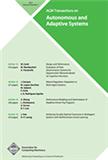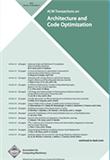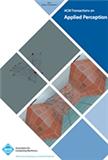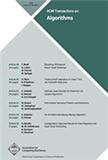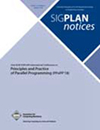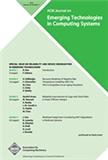FORMAL ASPECTS OF COMPUTING
SCIE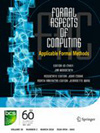
- 雜志名稱:計(jì)算的形式方面
- 簡(jiǎn)稱:FORM ASP COMPUT
- 期刊ISSN:0934-5043
- 大類研究方向:工程技術(shù)
- 影響因子:0.784
- 數(shù)據(jù)庫(kù)類型:SCIE
- 是否OA:No
- 出版地:UNITED STATES
- 年文章數(shù):38
- 小類研究方向:工程技術(shù)-計(jì)算機(jī):軟件工程
- 審稿速度:>12周,或約稿
- 平均錄用比例:容易
官方網(wǎng)站:http://link.springer.com/journal/165
投稿網(wǎng)址:https://www.editorialmanager.com/faoc/default.aspx
FORMAL ASPECTS OF COMPUTING
英文簡(jiǎn)介This journal aims to publish contributions at the junction of theory and practice. The objective is to disseminate applicable research. Thus new theoretical contributions are welcome where they are motivated by potential application; applications of existing formalisms are of interest if they show something novel about the approach or application. The term "formal methods" has been applied to a range of notations, theories and tools. There is no doubt that some of these have already had a significant impact on practical applications of computing. Indeed, it is interesting to note that once something is adopted into practical use it is no longer thought of as a formal method. Apart from widely used notations such as those for syntax and state machines, there have been significant applications of specification notations, development methods and tools both for proving general results and for searching for specific conditions. However, the most profound and lasting influence of the formal approach is the way it has illuminated fundamental concepts like those of communication. In this spirit, the principal aim of this journal is to promote the growth of computing science, to show its relation to practice and to stimulate applications of apposite formalisms to practical problems. One significant challenge is to show how a range of formal models can be related to each other. AUTHORS PLEASE NOTE: Before submitting a paper, authors are asked to contact an appropriate Editorial Board member and ascertain that he/she is willing and able to process your submission in a timely fashion. You can find the list of Editorial Board members and their email addresses under the “Editorial Board” tab on the journal homepage. Once you have submitted your paper you will be asked, by the system, to supply the Editor’s name before your submission will be processed.
FORMAL ASPECTS OF COMPUTING
中文簡(jiǎn)介這本雜志的目的是在理論和實(shí)踐的結(jié)合點(diǎn)發(fā)表論文。目的是傳播適用研究。因此,新的理論貢獻(xiàn)在潛在應(yīng)用的激勵(lì)下是受歡迎的;如果現(xiàn)有形式的應(yīng)用在方法或應(yīng)用方面顯示出一些新的東西,那么它們就會(huì)受到關(guān)注。術(shù)語(yǔ)“形式方法”已應(yīng)用于一系列符號(hào)、理論和工具。毫無(wú)疑問(wèn),其中一些已經(jīng)對(duì)計(jì)算的實(shí)際應(yīng)用產(chǎn)生了重大影響。事實(shí)上,有趣的是,一旦一些東西被采用到實(shí)際應(yīng)用中,它就不再被認(rèn)為是一種正式的方法。除了廣泛使用的符號(hào)(如語(yǔ)法符號(hào)和狀態(tài)機(jī)符號(hào))之外,規(guī)范符號(hào)、開(kāi)發(fā)方法和工具在證明一般結(jié)果和搜索特定條件方面也有著重要的應(yīng)用。然而,正式方法最深刻和持久的影響是它如何闡明基本概念,如溝通概念。本著這種精神,這本雜志的主要目的是促進(jìn)計(jì)算科學(xué)的發(fā)展,展示其與實(shí)踐的關(guān)系,并刺激應(yīng)用恰當(dāng)?shù)男问街髁x到實(shí)際問(wèn)題。一個(gè)重要的挑戰(zhàn)是展示一系列正式模型如何相互關(guān)聯(lián)。作者請(qǐng)注意:在提交論文之前,作者需要聯(lián)系適當(dāng)?shù)木庉嬑瘑T會(huì)成員,并確定他/她愿意并且能夠及時(shí)處理您的提交。您可以在期刊主頁(yè)的“編輯委員會(huì)”選項(xiàng)卡下找到編輯委員會(huì)成員及其電子郵件地址的列表。一旦你提交了你的論文,系統(tǒng)會(huì)要求你在提交之前提供編輯的名字。
FORMAL ASPECTS OF COMPUTING
中科院分區(qū)| 大類學(xué)科 | 分區(qū) | 小類學(xué)科 | 分區(qū) | Top期刊 | 綜述期刊 |
| 計(jì)算機(jī)科學(xué) | 4區(qū) | COMPUTER SCIENCE, SOFTWARE ENGINEERING 計(jì)算機(jī):軟件工程 | 3區(qū) | 否 | 否 |
FORMAL ASPECTS OF COMPUTING
JCR分區(qū)| JCR分區(qū)等級(jí) | JCR所屬學(xué)科 | 分區(qū) | 影響因子 |
| Q4 | COMPUTER SCIENCE, SOFTWARE ENGINEERING | Q4 | 0.886 |
FORMAL ASPECTS OF COMPUTING
中科院JCR分區(qū)歷年趨勢(shì)圖FORMAL ASPECTS OF COMPUTING
影響因子精選同類領(lǐng)域期刊,熱門推薦輕松get~
-
- ACM Transactions on Autonomous and Adaptive Systems
- 期刊ISSN:1556-4665
- 大類研究方向:工程技術(shù)
- 影響因子:
- 數(shù)據(jù)庫(kù)類型:SCIE
- 咨詢投稿
-
- ACM Transactions on Architecture and Code Optimization
- 期刊ISSN:1544-3566
- 大類研究方向:工程技術(shù)
- 影響因子:1.444
- 數(shù)據(jù)庫(kù)類型:SCIE
- 咨詢投稿
-
- ACM Transactions on Applied Perception
- 期刊ISSN:1544-3558
- 大類研究方向:工程技術(shù)
- 影響因子:
- 數(shù)據(jù)庫(kù)類型:SCIE
- 咨詢投稿
-
- ACM Transactions on Algorithms
- 期刊ISSN:1549-6325
- 大類研究方向:工程技術(shù)
- 影響因子:
- 數(shù)據(jù)庫(kù)類型:SCIE
- 咨詢投稿
-
- ACM SIGPLAN NOTICES
- 期刊ISSN:0362-1340
- 大類研究方向:工程技術(shù)
- 影響因子:
- 數(shù)據(jù)庫(kù)類型:
- 咨詢投稿
-
- ACM Journal on Emerging Technologies in Computing Systems
- 期刊ISSN:1550-4832
- 大類研究方向:工程技術(shù)
- 影響因子:2.013
- 數(shù)據(jù)庫(kù)類型:SCIE
- 咨詢投稿
精選常見(jiàn)問(wèn)題,答疑解惑輕松get~
- 三篇ssci論文怎么同時(shí)投出去
- 中文核心和sci哪個(gè)影響力更大
- 中科院一區(qū)和JCR一區(qū)期刊占比區(qū)別
- 發(fā)ssci如何快速找合適的期刊
- 資源保護(hù)方面論文投sci指導(dǎo)
- 外貿(mào)行業(yè)論文發(fā)ssci周期長(zhǎng)嗎
- 國(guó)外的sci投到錄用一般多久
- ssci期刊國(guó)內(nèi)認(rèn)可度
- 核能應(yīng)用論文翻譯英文發(fā)sci容易的方法
- 人口老齡化研究論文符合ssci領(lǐng)域嗎
- sci開(kāi)源和不開(kāi)源分別是什么意思?有什么影響?
- ssci發(fā)表是高水平學(xué)術(shù)論文嗎
- 生態(tài)修復(fù)主題英文論文會(huì)收錄哪些數(shù)據(jù)庫(kù)
- 哲學(xué)專業(yè)論文發(fā)英文期刊
- 中科院sci四個(gè)區(qū)的劃分
- ssci期刊和sci期刊的區(qū)別
- ESCI和SCIE要分清
- ssci送審論文多久出結(jié)果
- ssci論文二作有用嗎
- 水土保持類英文期刊好選嗎
- ssci期刊論文一定會(huì)檢索嗎
 投稿咨詢
投稿咨詢

